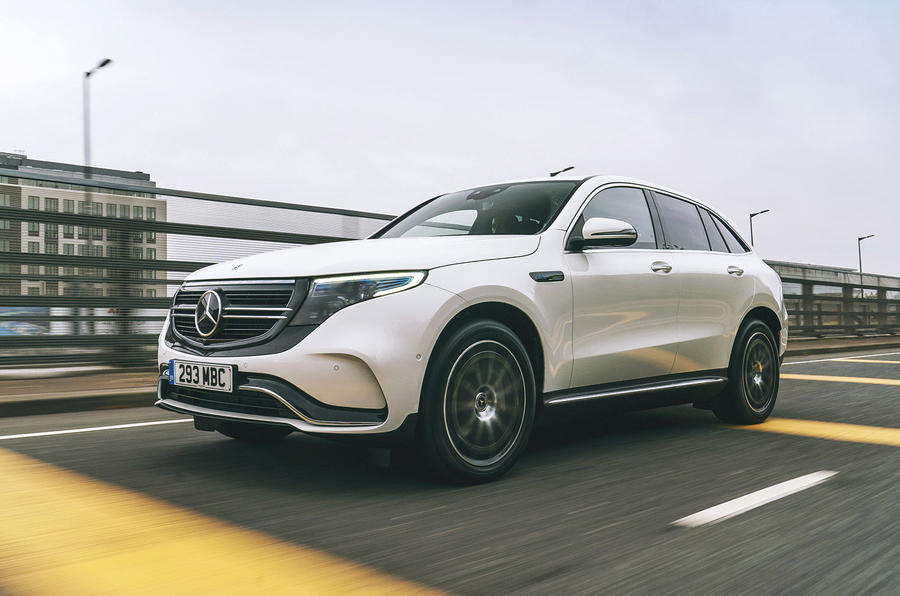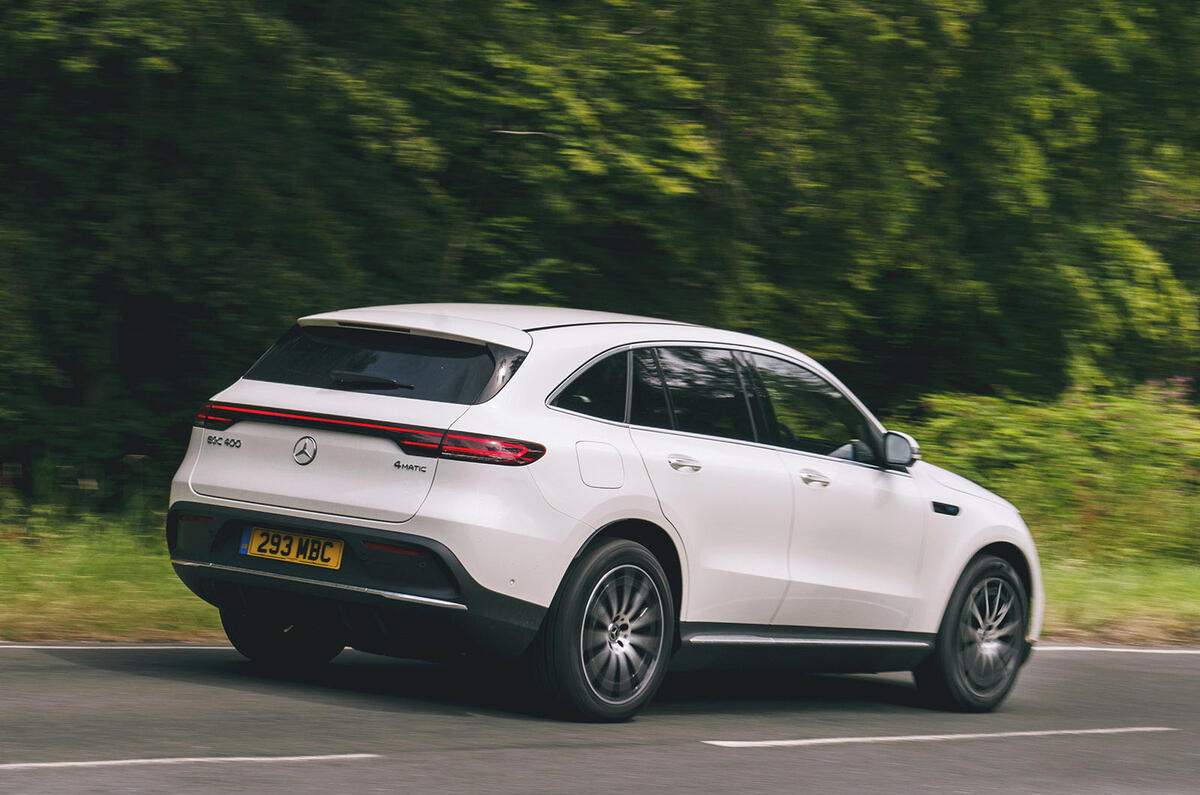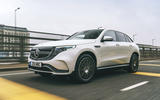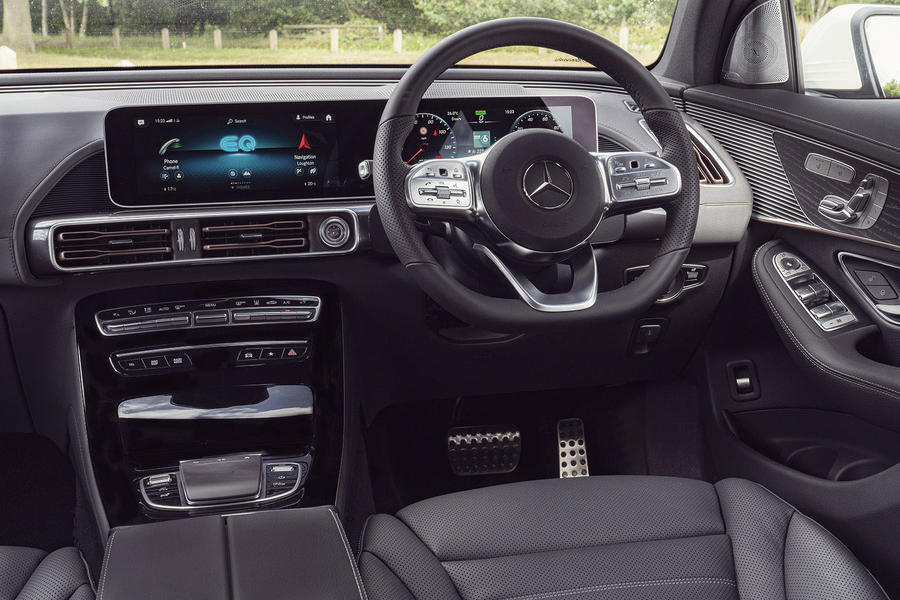What is it?
Mercedes’ first all-electric passenger car just landed in Britain. The Mercedes EQC is a mid-sized, five-seater SUV with four-wheel drive and, in EQC 400 form, more than 400 horsepower. It’ll accelerate considerably more quickly than most hot hatchbacks, offers generous room for five occupants and their luggage, and also plenty of the usual Mercedes-brand luxury-car refinements and desirability.
Which sounds like the sort of prospect that many would be ready to spend £70,000 on, doesn’t it? That the car is all-electric and runs entirely free of tailpipe emissions should, of course, still be its main selling point.
Adapted from the model platform used by the Mercedes GLC SUV, the EQC can’t quite be called a ‘ground-up’ dedicated EV design, but that doesn’t mean it hasn’t got the right kind of mechanical make-up. It’s powered by an 85kWh lithium ion battery pack carried under the cabin floor (just where it would be in a Tesla) and 80kWh of that total capacity is made ‘usable’ by the car’s control electronics. The rival Audi E-tron, by comparison, has 95kWh of total battery capacity, but only lets you access 83.6kWh of it – and the Jaguar I-Pace’s drive battery only lets you tap into very marginally more.
The EQC is driven by a separate electric motor and planetary gearbox per axle, which combined produce up to 402bhp and 561lb ft of torque, the latter being a fair chunk more instant pulling power than either the Audi E-tron Quattro or the Jaguar I-Pace make.
In terms of size, it splits the difference between the relatively compact Jaguar and the bigger Audi almost exactly; and on kerb weight – the enduring problem associated with big drive batteries that all electric cars must strain against – it’s marginally lighter than the Audi but a good 300kg heavier than the Jaguar. Some of that weight penalty can be pinned on Mercedes’ decision to adapt an existing platform here rather than design a new one – which is precisely what Audi did, too.
If getting the maximum usable battery range for your money is your primary concern as an early adopting EV owner, meanwhile, the EQC matches the Audi exactly for claimed electric range (up to 259 miles depending on optional specification) but narrowly loses out to both the Jaguar (up to 292 miles) and the longest-range version of the Tesla Model X (314 miles) on the latest WLTP-certified lab test numbers. That it’s priced from just above £65,000 (before any purchase incentive) makes it a shade cheaper than both the Audi and Tesla, however.

























































Join the debate
Add your comment
Oh dear...
Why do our German cousins insist on replacing instrument clusters with what looks like a double-height iPhone nailed to the fascia as an afterthought?
Oh Boy...spend 70K for a GLC
Oh Boy...spend 70K for a GLC twin that has less range and less capability...MB how about build an EV that actually does not compete with itself?
4.5 stars? Really? Why?
4.5 stars suggests this car is near perfect.
As Merc's first attempt at a production passenger EV in the UK I find that very hard to swallow, especially since it is based on a fossil-fuel platform. As your report says it does nothing brilliantly.
It costs more than twice as much as a Kia e-Niro but does little significantly better: it's quiet, carries five people and most of their stuff over a comparable (or slightly lower) range. It is significantly more accelerative than the Kia, but not more so than it's peers of a similar price. It has no killer USP like Tesla's dedicated Supercharger network.
I don't deny it is a good car, but I can't believe you think it deserves 4.5 stars...
Tom Chet wrote:
Really? Sitting in a Kia feels similar to sitting in a Benz? You honestly don’t notice a lift?
You're right. The interior
You're right. The interior of the EQC is much nicer than the Kia's and is one of the things that is 'significantly better', but it costs £40k more.
I am more convinced that the Kia is a 4.5 star car than the EQC. Considering the price they are charging and its competition, I don't think that the EQC is a remarkable car which is what a 4.5 star rating implies.
TottenhamDave wrote:
You're right. The interior of the EQC is much nicer than the Kia's and is one of the things that is 'significantly better', but it costs £40k more.
I am more convinced that the Kia is a 4.5 star car than the EQC. Considering the price they are charging and its competition, I don't think that the EQC is a remarkable car which is what a 4.5 star rating implies.
Sorry - I really haven't got the hang of the formatting and inability to edit in this forum.